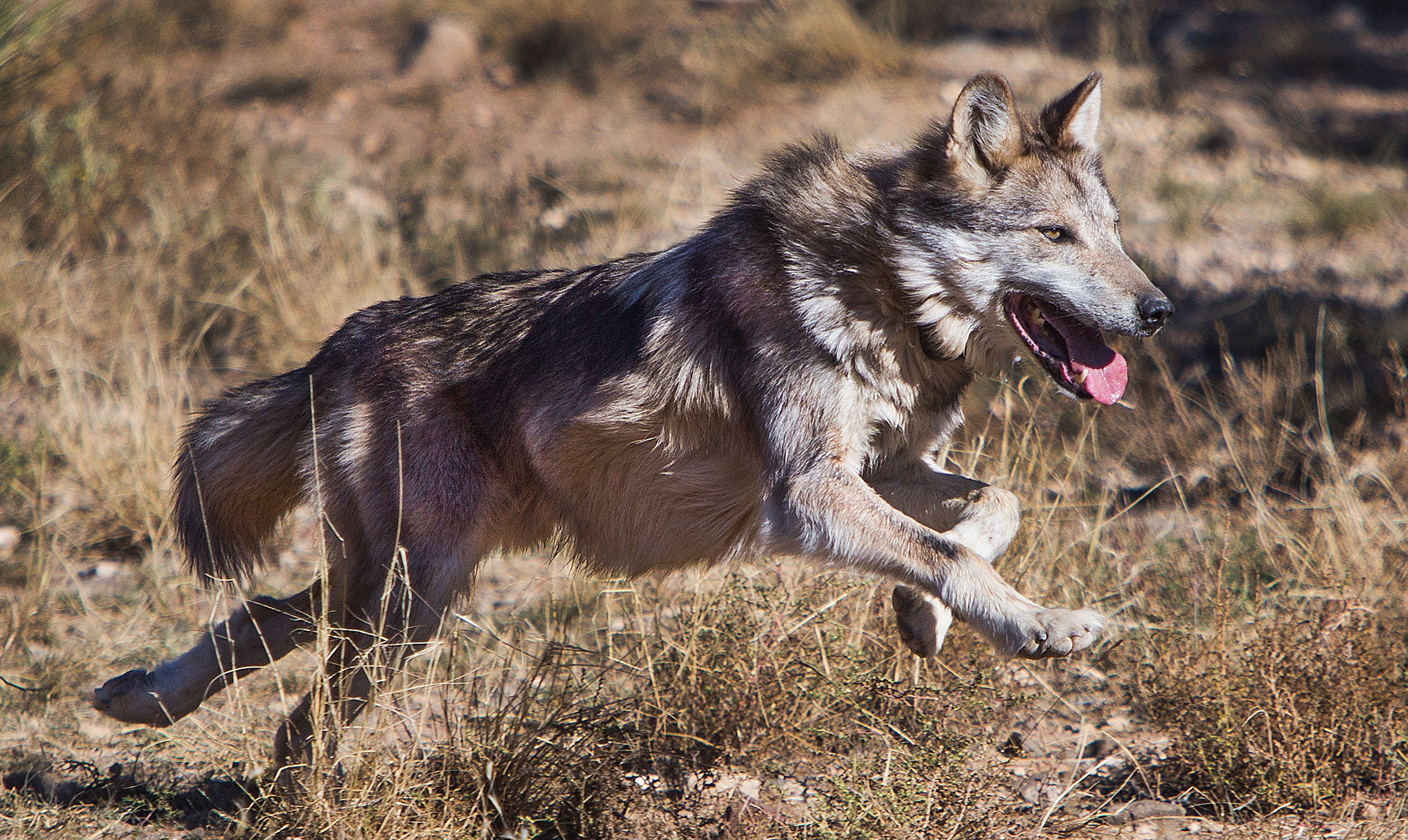Mexican
gray wolves face a
challenging recovery.
 Wilderness Protection Campaigns
Wilderness Protection Campaigns
Protect Mexican gray wolves
The critically endangered Mexican gray wolf is the rarest subspecies of all North American gray wolves. Once numbering in the thousands, the population was nearly wiped out by the early 1980s through federal, state, and private eradication campaigns using poisons, hunting, and trapping. In 1976, the U.S. Fish and Wildlife Service (USFWS) listed Mexican wolves as endangered and began a captive breeding program based on just seven remaining individuals. In 1998, USFWS reintroduced captive-born wolves into a management zone straddling the Arizona-New Mexico border, and reintroductions have continued since.
Mexican wolf recovery is vital to re-establishing balance in our ecosystems. As apex predators, wolves regulate deer and elk populations, benefit plant life and riparian habitats, and promote biodiversity. However, they face serious threats: critically low genetic diversity (the entire population descended from only seven animals), ongoing rancher and local government opposition—including county commissions declaring "wolf emergencies"—and illegal killing, which remains the largest source of mortality since reintroduction began. Too often, USFWS regulations reflect politics rather than science.
The good news? The latest count documented 286 wolves in the wild—the eighth consecutive year of growth. New Mexico Wild and partners are pursuing a federal lawsuit to force USFWS to revise management policies, comply with the Endangered Species Act, address genetic threats, prevent illegal killings, allow wolves into habitat north of I-40, and establish three interconnected subpopulations as scientists recommend.
For decades, New Mexico Wild has protected our small Mexican wolf population and advocated for responsible wildlife management. With your help, we'll continue until the iconic Mexican wolf is recovered. Because Wolves Belong!
Get Involved
Mexican Gray Wolf
Action Center
Visit Page
News Updates
Mexican Gray Wolf Recovery: Progress and Setbacks in Summer 2025
The Mexican gray wolf population has experienced both hope and tragedy this summer, highlighting the complex challenges facing North America’s most endangered wolf subspecies. Asha’s
Read More35 Conservation Groups Urge Federal Wildlife Officials: Let “Taylor” the Wolf Stay North of I-40
New Mexico Wild joined 34 other conservation organizations representing over two million members in calling on the U.S. Fish and Wildlife Service to stop removing
Read MoreIt’s the same (very, very) old story about wolves
The following op-ed written by Luke Koenig was published in the Santa Fe New Mexican on July 20, 2025. When I was younger, I worked
Read MoreUrgent call to action: Speak up for New Mexico’s Endangered Species!
ACTION NEEDED BY MAY 17TH The U.S. Fish and Wildlife Service has proposed to weaken the regulations under the Endangered Species Act (ESA) in a
Read MoreWandering Wolf “Ella” Found Deceased in New Mexico
For immediate release: March 31, 2025 Media contacts: Greta Anderson, Western Watersheds Project (520) 623-1878; greta@westernwatersheds.org Chris Smith, WildEarth Guardians (505) 395-6177, csmith@wildearthguardians.org Sally
Read More
Wilderness and Wild and Scenic designations are paramount in order to protect the Mexican gray wolf from illegal killings

![]() There are 286 Mexican gray wolves known to survive in the wilds of southwestern New Mexico and southeastern Arizona. If we want to protect New Mexico’s wild heritage, we must act now to protect the Mexican gray wolf. That’s why New Mexico Wild remains committed to advocating for the conservation of the wild places that Mexican gray wolves call home.
There are 286 Mexican gray wolves known to survive in the wilds of southwestern New Mexico and southeastern Arizona. If we want to protect New Mexico’s wild heritage, we must act now to protect the Mexican gray wolf. That’s why New Mexico Wild remains committed to advocating for the conservation of the wild places that Mexican gray wolves call home.







